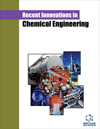
Full text loading...
We use cookies to track usage and preferences.I Understand

The use of various dyes to colour products is a general practice in various industries. The occurrence of these dyes in water, even at small concentrations, is highly noticeable and aesthetically objectionable. In the present study, the applicability of inexpensive and eco-friendly bio-adsorbent has been tested as an alternative substitution of the commercially available activated carbon for the removal of reactive dye from the aqueous solution.
Bio-adsorbent prepared from pomegranate peel was successfully used to remove the reactive dye (Reactive Black 5) from the aqueous solution. The effects of major parameters such as pH, adsorbent dosage, and contact time on dye removal efficiency were studied. Statistical models were articulated based on selected variables to optimize the decolourisation efficiency of the adsorption process using a full factorial central composite design.
Dye removal efficiency of close to 100% was observed at a pH 12 using 1 g adsorbent/200 mL dye solution within a contact time of 60 min., yielding a virtually colourless solution. A fixed-bed column study with an initial dye concentration of 100 mg/L at bed depths of 4 cm, 8 cm, and 12 cm yielded a breakthrough time of 300 min, 570 min, and 780 min, respectively.
Langmuir, Freundlich, and Temkin isotherm models were applied to analyze the sorption equilibrium parameters. The experimental results of the analysis revealed that the Langmuir isotherm fits better than the other isotherms with a linear regression coefficient (R2) of 0.99. The high correlation coefficient (R2 > 0.95) and low p-values (< 0.0001) indicate that the model and its terms are significant, making it effective for optimizing operational parameters and accurately predicting the response.
The breakthrough curve serves as a tool to evaluate the effectiveness of the prepared adsorbent in real-world applications. The present work not only provides an alternative to commercially available activated carbon for dye wastewater colour removal but also emphasizes the importance of repurposing fruit residues, which could otherwise become environmental pollutants if improperly disposed of.

Article metrics loading...

Full text loading...
References


Data & Media loading...